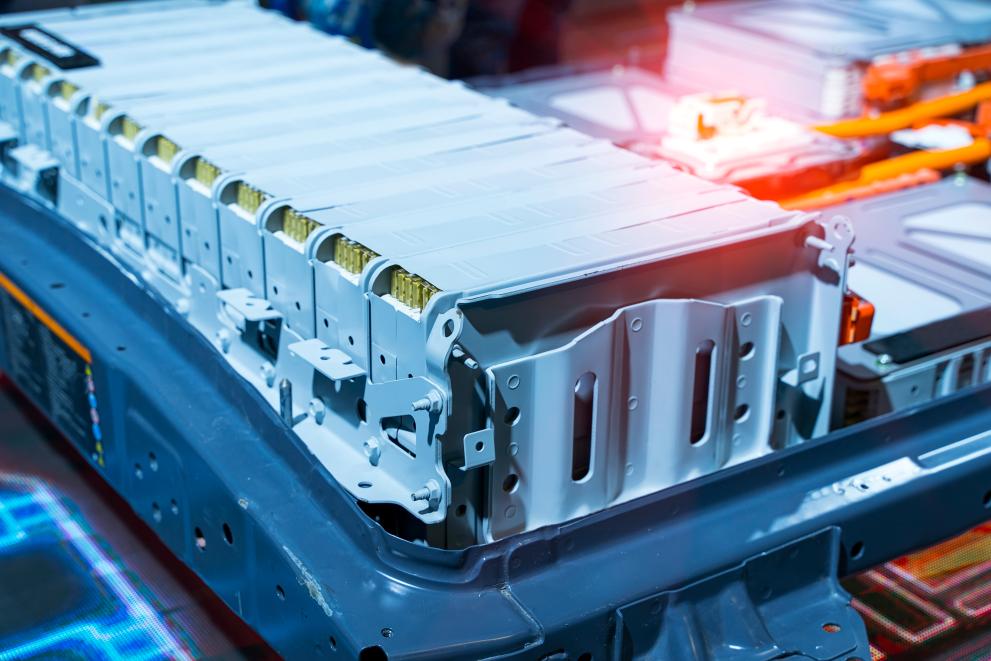
This study assessed the environmental costs associated with meeting demand for key resources in the EU by 2050. The researchers estimate the total annual cost at €38.9 billion, with 48.5% arising from materials used for electric-vehicle batteries, including nickel, accounting for 24.9% of total cost.
The transition to a low-carbon economy set out in the European Green Deal will alter demand for many raw materials. However, the environmental impacts of increased demand for key resources required to provide the necessary infrastructure have not been fully assessed. This study used existing data to explore the implications of rising demand by material, type of impact and affected country.
The researchers identified anticipated consumption of key materials from the EU Foresight study, Critical raw materials for strategic technologies and sectors in the EU1, and sourced those countries exporting them to the EU from the UN Comtrade database, incorporating production within the EU27 from the US Geological Survey. They considered a range of scenarios, focusing their analysis on a situation with moderate material demand, no recycling (due to current lack of available recycling processes) and a 0% discount rate. They assumed that all materials would continue to be sourced from different countries in the same proportions as they are currently. The researchers then assessed each material for impacts on climate change, water use, land use and abiotic resource depletion (using up finite supplies of materials). They transformed these levels of impact into monetary values to produce final estimates of the total annual cost of environmental damage by 2050.
The researchers report that the estimated total cost of damage was €38.9 billion. However, they calculate this as only 3.7% of the current annual cost of EU carbon emissions, based on 3.6 billion tonnes of CO2 (tCO2) emitted in 2018 at a price of €290 per tCO22. Nickel accounted for 24.9% of the estimated costs in 2050 (€9.7 billion), they say, with iron accounting for 14% and aluminium for 13.9%.
They report that 45.8% of the damage costs are associated with materials for batteries used for electric mobility purposes, and a further 8.4% linked with batteries for renewable-energy infrastructure. Impacts on climate change accounted for 47.5% of total costs, according to the researchers, and abiotic resource depletion for 45%. They highlight the disparity between imported quantities of each material and its contribution to impact, with nickel making up only 12% of imported mass, and cobalt, for example, making up 2% of mass but contributing 10.94% of total environmental costs.
The largest share of environmental costs is borne by China, say the researchers, at €8.2 billion or 21% of the total. They report that substantial costs are also carried by the USA (€4.5 billion) and India (€3.9 billion). However, they say that, as a proportion of national GDP, the greatest burden falls on Guinea and Gabon with environmental costs exceeding 1% of GDP from bauxite and manganese mining, respectively.
The researchers highlight that as these environmental damage costs only represent 3.7% of costs from EU carbon emissions in 2018, they are likely to be outweighed by the benefits of the transition to a low-carbon economy. They argue that recycling could be a key component in reducing impacts from the production of raw materials and that provisions for public transport and cycling could limit demand for vehicle batteries. The study does not focus on this area, however, as recycling of these materials has not yet begun in earnest – the researchers say that recycling processes for many of the materials and products do not exist in industrial quantities (there are not many electric vehicles entering the demolition phase).
The researchers acknowledge that there are many uncertainties concerning their calculations – such as future location changes in sourcing of materials, changes in technologies that could alter the demand for materials or the impacts of their production, and uncertainties in ascribing prices to impacts (for instance, estimates for the social cost of carbon range from €7.6 to €69 009.50 per tonne of CO2 equivalent). They suggest, however, that their methodology could play an important role in incorporating these considerations into planning activities such as criticality assessments, integrated assessment models and material flow analyses.
Footnotes:
- EC’s Directorate-General for Internal Market, Industry, Entrepreneurship and SMEs (2020) Critical raw materials for strategic technologies and sectors in the EU, A Foresight Study. Publications Office of the EU. Available from: Critical raw materials for strategic technologies and sectors in the EU - Publications Office of the EU (europa.eu) [Accessed 27.6.22]
- Ricke, K., Drouet, L., Caldeira, K. and Tavoni, M. (2018) Country-level social cost of carbon. Nature Climate Change 8: 895–900.
Source:
Arendt, R., Bach, V. and Finkbeiner, M. (2022) Environmental costs of abiotic resource demand for the EU's low-carbon development. Resources, Conservation and Recycling 180: 106057.
To cite this article/service:
“Science for Environment Policy”: European Commission DG Environment News Alert Service, edited by the Science Communication Unit, The University of the West of England, Bristol.
Notes on content:
The contents and views included in Science for Environment Policy are based on independent, peer reviewed research and do not necessarily reflect the position of the European Commission. Please note that this article is a summary of only one study. Other studies may come to other conclusions.
Details
- Publication date
- 5 October 2022
- Author
- Directorate-General for Environment

